- Home
- Pearl S. Buck
The Child Who Never Grew (nonfiction)
The Child Who Never Grew (nonfiction) Read online
The Child Who Never Grew
A Memoir
Pearl S. Buck
Contents
Foreword
Introduction
The Child Who Never Grew
I
II
III
Afterword
A Biography of Pearl S. Buck
Foreword
James A. Michener
FOR SOME YEARS AT the close of World War II, three people who took writing seriously chanced to live near one another in an attractive corner of eastern Pennsylvania. Centering on the handsome rural town of Doylestown and not far from the artists’ colony at New Hope, their homes formed an isosceles triangle. At the southwest corner lived Oscar Hammerstein, gifted lyricist of many New York musical shows, and Pulitzer Prize winner in 1949 for the hugely successful South Pacific. Due north of him, eleven miles distant, I lived with my own prize in 1948 for having written the book on which the play was based. And eight miles to the west of each of us stood the stately but not ostentatious home of the famous Pearl Buck, winner of the Pulitzer in 1932 and the Nobel in 1938, both for her tremendously appealing novel The Good Earth.
We knew one another favorably, and by coincidence each of us had a strong connection with Asia. Pearl Buck’s prizewinning novel dealt with the agrarian peasants of China. Oscar Hammerstein’s Australian wife had a sister married to a Japanese, and I would soon have a Japanese wife, but she was born in Colorado and so had always had American citizenship, a fact which did not keep her from being interned in a camp during the war against Japan.
As we three met, and Miss Buck and I could be termed ‘old Asia hands,’ she brought to our attention the sad and sorry plight of babies who had been sired by American men in military uniform serving in Japan and Korea and then abandoned by their fathers and, shockingly often, by their mothers too. When such babies were either born in the United States or found their way here by devious routes, they were treated no better. As Pearl described to Oscar and me when she invited us to her farm one afternoon: “In our country if the children are totally abandoned, they’re most often thrown into some institution for the mentally defective, and there they run the risk of becoming truly retarded. They are doomed.”
“Why aren’t they put up for adoption?” Oscar asked, and she cried: “That’s why I invited you over. Because they’re half-white, half-Oriental, it’s always been assumed that they’re ineligible for adoption. No one tries to place them, and in the institutions they’re thrown into they wither.”
“That’s awful,” Hammerstein mumbled, for he was a man with a generous heart, and I seconded his castigation of such a system, but I doubt if either of us would have done much to alleviate it had not Miss Buck with that grim, fearless determination which had always marked her—she did not accept defeat easily—made this announcement: “I have not the slightest doubt in the world that these adorable babies are adoptable. And I propose to find them homes.”
“Where will you locate Japanese-American couples who might take the babies?” Hammerstein asked, and she surprised us by snapping: “We won’t worry about finding such marriages. We’ll place these lovable children in ordinary white homes, like yours or mine.”
“Will such people adopt half-caste babies?”
“We’ll no longer use that terribly pejorative term. Oscar, we’re all half-castes, one way or another. Portuguese-German parents, Russian-English, Swedish-Spanish. That is, if you go back far enough.”
And from that meeting and others like it, Pearl Buck with her iron will and the royalties from the blizzard of her books sold by her publisher husband, Richard Walsh of the John Day Company, launched Welcome House, a meticulously run orphanage for unadoptable Asian-American children, most of them fathered by American G.I.s.
In this way Hammerstein and I became deeply involved in finding homes for healthy, normal Eurasian babies—that is, father an American G.I., mother an Asian woman of Japanese, Korean, or Thai heritage—but we did not realize that we were unknowingly edging into a much bigger and more involved problem; the care and nurturing of children who through no fault of their own had mental retardation, children who are born physically competent but whose minds mysteriously stop growing. This book and my foreword deal with the heroic efforts Pearl Buck made to salvage these children, but how Hammerstein and I learned she was engaged in this greater problem will be explained shortly. For the moment we are still concentrating on the ordinary child, the abandoned offspring of the war.
When we launched our serious attempt to find the G.I. babies, we accumulated startling numbers, for traditional adoption agencies were glad to be rid of them, still convinced that they would never find homes in the United States. Pearl Buck worked tirelessly to convince ordinary American families—both husband and wife often Anglo-Saxon white—that her children, as she called them, would make fine additions to their families. She was remarkable in her energy, convincing in her persuasiveness. Before we had been in existence even half a year, she was finding one standard American family after another eager to accept these children.
In her campaign she was wonderfully assisted by the children, for they were adorable, laughing girls and sturdy boys. Sometimes their skin coloring and eye formation favored their Oriental mothers so that they were clearly Eurasian, but just as often it was their fathers’ genes that prevailed, and then it was difficult to guess their ancestry. But the important point is that during the years that Hammerstein and I helped her, we found ourselves with not one baby that was unadoptable. True, the fame of Miss Buck as a crusading writer sped the process of finding homes, but in our own less spectacular ways Hammerstein and I helped.
I must stress that much of the hard work, and the monetary contributions to Welcome House, came not from Hammerstein and me. Miss Buck had organized a powerful committee of her neighbors throughout the area to help, and it was they who kept Welcome House functioning. They were valiant assistants, not one of them with any affiliation to Asia. They made their crucial contributions because they were people of good heart.
However, Hammerstein and I were of critical assistance when our venture ran into a secondary obstacle which seemed insurmountable. When we accepted any abandoned child that the other agencies felt they could not place in a stable home, we found that a surprising percentage of them were the offspring of black military fathers and the Oriental women with whom they had lived while in Japan, Korea or Thailand. “These unfortunate children,” said the agencies who passed them along to us, “really are unadoptable,” and they wished us well after thanking us for having relieved them of a burden they could not handle.
Pearl Buck’s finest hour, so far as I witnessed her in action, came when she said with great force: “We welcome these half-black children. They’ll prove just as adoptable as the white-Oriental babies you originally told us were unadoptable. The simple fact is, you haven’t tried to place them.” And she became a heroic propagandist in convincing white married couples that these handsome, dark-skinned babies would mature into adults of whom the family would be proud. Through her unceasing pressure and brimming confidence, she found homes for every black-Oriental orphan who came our way, one of the triumphs of this remarkable woman.
Hammerstein had been deeply involved in these experiences when time came for him to write lyrics for the songs in South Pacific, and it could well have been his observation of Pearl Buck at work which inspired him to write one of the famous songs in the play. Joe Cable, the Marine lieutenant from Philadelphia’s Main Line and Princeton, is explaining why he cannot marry Liat, his Tonkinese sweetheart. In bitterly specific words, he sings that racial prejudice is not inherited, it is taught. Prior to t
he play’s opening on Broadway, several well-intentioned people approached me, begging that I advise Rodgers and Hammerstein to drop that song, because in a musical show which was supposed to be entertaining, it would grate. Adamantly Hammerstein refused: “That’s what the play is about,” and when Rodgers supported him, that song became one of the favorable talking points in the play.
At about this time I was allowed an oblique glimpse of Pearl Buck, that is, a view of her contribution that came by accident from an unprejudiced source. While on a writing assignment in Tokyo I received a cable from Miss Buck asking me to visit a Mrs. Renzo Sawada, who had organized her own orphanage to care for abandoned Japanese babies. A woman from a distinguished family, she was highly regarded throughout Japan as a person of compassion and charitable instinct. She had accomplished wonders in finding homes in Japan for her children, but since the Japanese are among the most xenophobic of all national groups—they tend to distrust and fear anyone not pure Japanese—she had found it extremely difficult to place the fair-skinned children of white American G.I.s and totally impossible to locate homes for the offspring of our black G.I.s.
“That’s why Mrs. Buck is so valuable to us,” Mrs. Sawada told me when I visited her in the spacious family home that contained her orphanage. “Through her courage in the United States we’re able to find homes for children who would never find a place if they remained in Japan. Forbidden.”
“How do you get the children to us?”
“That’s part of the miracle. Mrs. Buck raises funds in the States, sends the money to us, and we fly our babies to you. When I was in the States I saw them arriving at Seattle. Most of them had already been assured a place in one of your families. By using photographs.”
“Mrs. Buck directed me to tell you ‘Send us all you have. We’ll find homes for them,’ ” and when I left, Mrs. Sawada said: “Without her help, our G.I. babies would be lost. Here there’s no place for them.”
As I worked with Miss Buck on her gallant venture I gradually became aware that she had a child of her own whom I never saw, a daughter I was told, and it was whispered that this girl was so retarded that she had been spirited away in some refuge for such children. Since I had learned from my work with Pearl that she was acutely reticent about talking of herself, I never asked her about a daughter who might have been impaired; and she certainly never mentioned the matter to me. Nor, because of my travels overseas, was I aware that she had written a magazine article about this family misfortune. No one mentioned it to me, because in our community this was a guarded topic, but when I heard the rumors I did recall what Pearl had told me at our first meeting: “The unwanted children are most often thrown into some institution intended for the mentally defective, and there they run the risk of becoming truly retarded,” and from that bitter assessment I deduced that she knew something about the hideously named “insane asylums” in which the G.I. babies were so often hidden away, thus surrendering any hope of normal development.
In late 1951 a neighbor gave me a copy of The Child Who Never Grew, the hard-cover book based on the magazine article, and in it I read the harrowing account of how, step by agonizing step, a watchful mother awakens to the fact that her child’s mental growth has arbitrarily stopped at a given point, as if a steel curtain has descended about the brain, cutting it off forever from the sentient world about it. Any intellectual communication has became impossible, although the body in which the damaged brain exists survives and even prospers.
When I inquired locally about the book I was told: “Its effect has been phenomenal. Highest praise. Many printings. Because it opened to public discussion a problem that had been previously kept as a shameful secret in the closet of more families than you could ever have anticipated. It was one of the most influential books she wrote.” It is for this new edition of her spiritually moving book that I write this introduction.
Thanks to the original edition, I now understood the secret of Pearl Buck’s drive to save damaged children. Most were less crippled mentally than her daughter, but each was disadvantaged in her or his own way. Watching her work at saving children, I felt increasing admiration for this gallant woman. However, she and I did not speak of her hidden daughter, until one morning, years later, when Welcome House was a thriving orphanage, still placing every abandoned child that came our way. Early one morning she telephoned me from her home: “James, can you spend the day with me, please? We need to talk.” And she proposed that her chauffeur meet me at a rural crossroads.
Unable to guess why she was using this device for an ordinary meeting, I agreed, and when the long black car pulled up I saw that in the back seat rode Pearl Buck, then in her early seventies I believe, regal as always, smiling in friendship and eager to talk. As I settled down for what would be a long drive she said: “On this day I wanted companionship. These days whenever I go to South Jersey I wonder if it will be the last time I shall see her,” and she mentioned the quiet little town in southern New Jersey where the refuge stood in which her daughter Carol, now in her forties, had lived for many decades. “It’s the best institution of its kind in America. Wonderfully caring people who bring the ultimate out of every child who lives with them.”
When I made no comment she continued: “Recent studies by nutrition experts seem to indicate that some chemical deficiency in the first few weeks of life, or perhaps even in the womb during the last month of pregnancy, limited my daughter’s ability to nurture her brain cells. And this dooms any child with such a deficiency to a stunted intellectual growth.” Having said this, she looked straight ahead for some minutes, then punched her right fist into her left palm and said: “How terrible, to think that the absence of some pill no longer than this might condemn a child to perpetual infancy!” She shook her head in disbelief that such a monstrous event could happen, almost by chance.
And for the rest of the trip south she talked about other advances in the genesis and care of children like her daughter.
When we reached the Training School at Vineland I did not see Carol, now a grown woman, for Pearl did not want a stranger like me to confuse her. Pearl spent about two hours with her daughter, leaving me to read in the limousine. Officials of the home, hearing that I was on the grounds, came to extend courtesies but it was clear to me that Mrs. Buck hoped I would stay where I was, and I did.
At the start of the trip back to Buck’s County, Pearl was at first silent, as if the perpetual grief that haunted her over the loss of her child was too poignant to express or share, but after we had traveled some miles in silence, her enthusiasm for life and her constant willingness to face the challenges ahead resumed control, and she talked of her plans for Welcome House and its importation across the Pacific of new groups of Korean-American children who had been abandoned in that country.
During the entire day’s trip, although she was fifteen years older than I, she was the one who was more alert, more cogent in her observations and more excited about the future. It was a revealing visit with a brilliant woman in complete control of her mental processes and her plans for continued work. I make this point because some observers have spread the rumor that in her later years Pearl Buck had begun to lose her mental acuity, or perhaps her constant drive toward the future. I can testify that when I last saw her this was not the case. She was more in command than I and on a higher level of intensity.
That was the last time I would see her, and I was glad it had been in such a varied setting: the long drive through beautiful countryside, the prolonged conversation about orphaned children, the revelations about her fears regarding a parent’s possible culpability for a child’s mental retardation, the love she showed for her daughter, and her plans for continued effort in these fields of adoption and mental retardation in which she had done such superlative work.
It was she alone who conceived the possibility of rescuing Japanese-American orphans from institutions for the mentally retarded and placing them in normal homes. It was she, persevering against advice from tho
se with greater experience, who modified adoption practices. And it was she who supported the efforts of doctors, nurses and welfare experts who were striving to treat people with mental retardation more humanely and with greater insight into the causes and course of mental impairment. She wrote many fine books and won notable prizes, but her major humanitarian work was with children, some of them sadly stigmatized like her own daughter.
Texas Center for Writers
Austin, Texas
Introduction
Martha M. Jablow1
THE CHILD WHO NEVER Grew was published first as an article in the Ladies Home Journal in May, 1950, and a year later in hardcover by The John Day Company.
Why would anyone care to read a four-decade old book about a mentally retarded child who was born in 1920? Why would a publisher reissue such a book? Even with a Pulitzer and Nobel prize-winning author, a foreword by James Michener, and an attractive new cover, surely a book written more than forty years ago must be outdated.
“Outdated” and “Pearl Buck” do not belong in the same sentence. Pearl Buck was a woman well ahead of her time—on issues of civil rights, feminism, mental retardation, and children’s rights. Yet it is true that some parts of The Child Who Never Grew are no longer appropriate or accurate. Since 1950, advances in medicine, education, and law have improved opportunities for people with mental retardation. But the end of this short book addresses the pros and cons of public and private custodial institutions. Many of those huge state institutions which have “an immense advantage in that they are permanent, and once a child enters he is secure for life,” as Ms. Buck wrote then, are now closed or closing. The children who were placed there decades ago are adults today living in small group homes scattered throughout their communities. Many of them are holding jobs, voting, and paying taxes.
The few outdated references in this book are far overshadowed by Pearl Buck’s moving portrayal of parents’ conflicting emotions as they come to terms with a child’s limitations. When she writes from her heart about her personal pain and struggle with her daughter Carol’s condition, her voice is universal. She speaks to all parents who have traveled the same road—or who are just embarking on that journey as they discover that their child has some form of developmental delay.

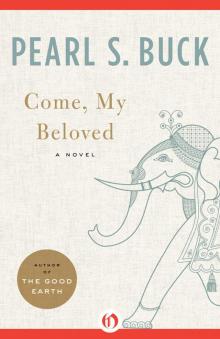 Come, My Beloved
Come, My Beloved The Big Wave
The Big Wave The Patriot
The Patriot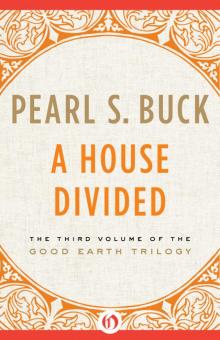 House Divided
House Divided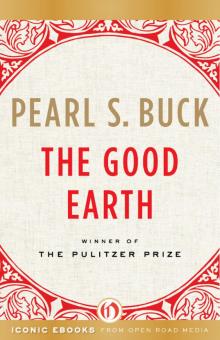 The Good Earth
The Good Earth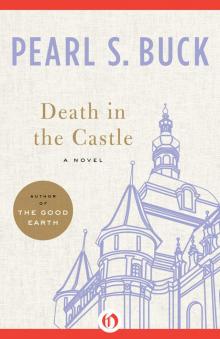 Death in the Castle
Death in the Castle The Eternal Wonder
The Eternal Wonder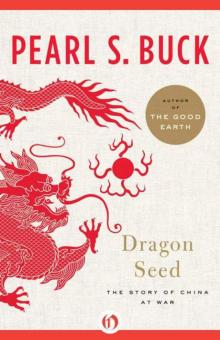 Dragon Seed: The Story of China at War
Dragon Seed: The Story of China at War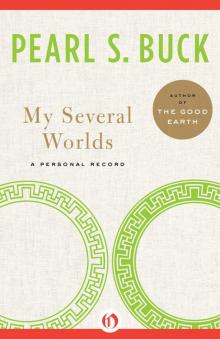 My Several Worlds: A Personal Record
My Several Worlds: A Personal Record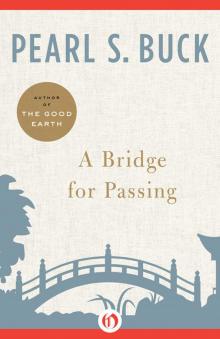 A Bridge for Passing: A Meditation on Love, Loss, and Faith
A Bridge for Passing: A Meditation on Love, Loss, and Faith Peony
Peony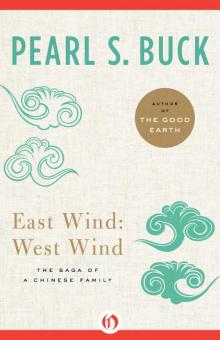 East Wind: West Wind: The Saga of a Chinese Family
East Wind: West Wind: The Saga of a Chinese Family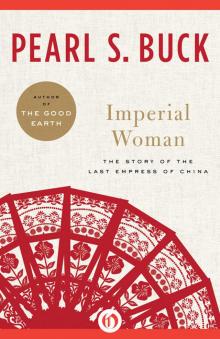 Imperial Woman
Imperial Woman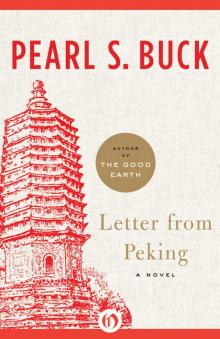 Letters From Peking
Letters From Peking Kinfolk
Kinfolk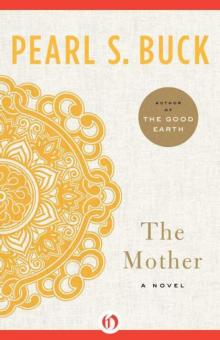 The Mother
The Mother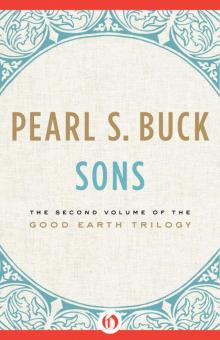 Sons
Sons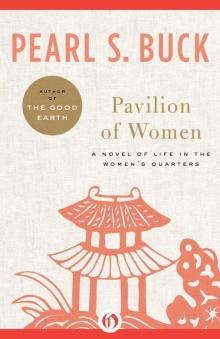 Pavilion of Women
Pavilion of Women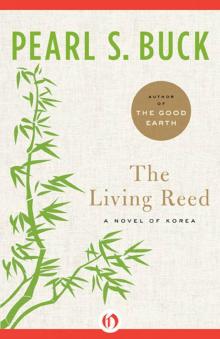 The Living Reed: A Novel of Korea
The Living Reed: A Novel of Korea The Big Wave: A Novel
The Big Wave: A Novel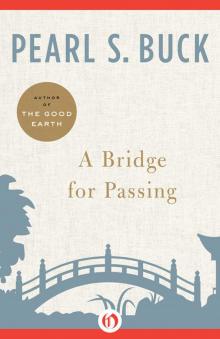 Bridge for Passing
Bridge for Passing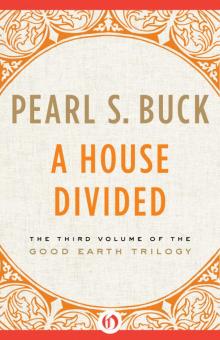 A House Divided
A House Divided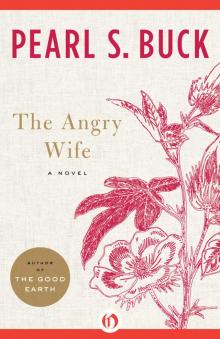 Angry Wife
Angry Wife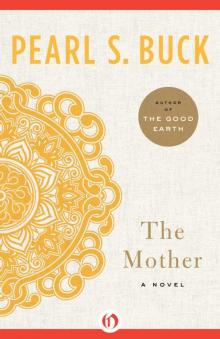 The Mother: A Novel
The Mother: A Novel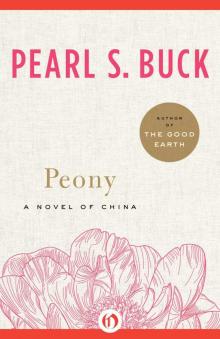 Peony: A Novel of China
Peony: A Novel of China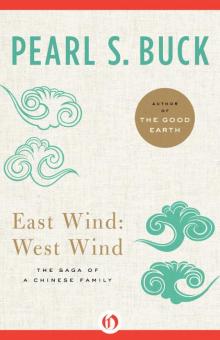 East Wind: West Wind
East Wind: West Wind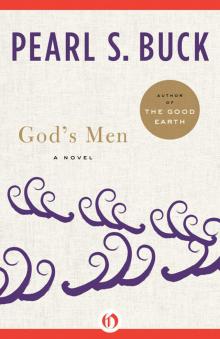 Gods Men
Gods Men Patriot
Patriot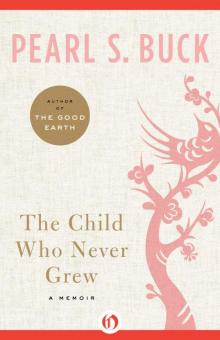 The Child Who Never Grew (nonfiction)
The Child Who Never Grew (nonfiction)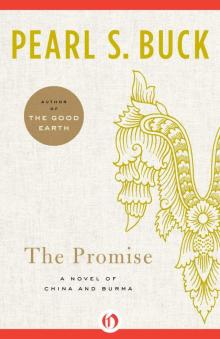 The Promise: A Novel of China and Burma (Oriental Novels of Pearl S. Buck)
The Promise: A Novel of China and Burma (Oriental Novels of Pearl S. Buck)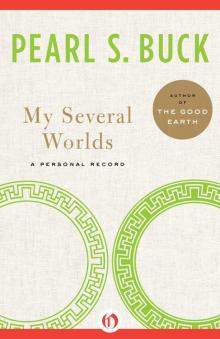 My Several Worlds
My Several Worlds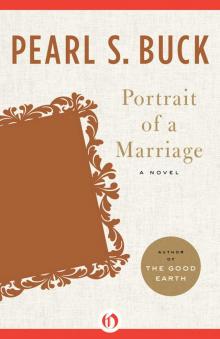 Portrait of a Marriage
Portrait of a Marriage The Goddess Abides: A Novel
The Goddess Abides: A Novel Hidden Flower
Hidden Flower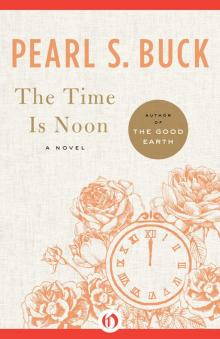 Time Is Noon
Time Is Noon